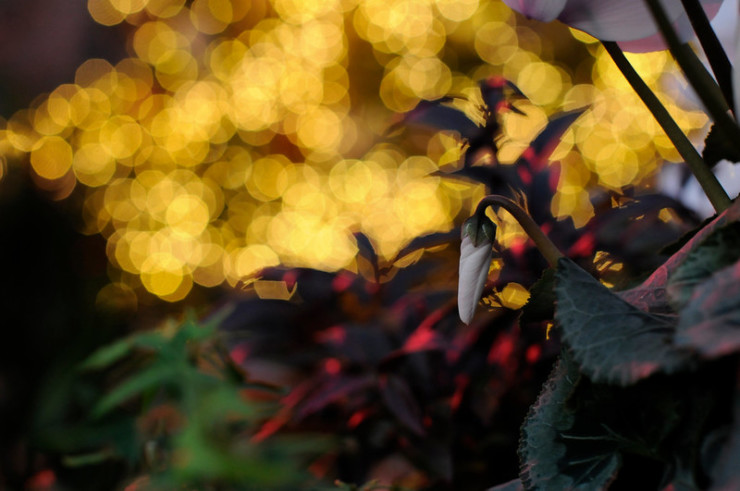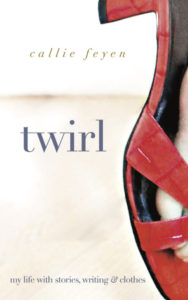I have been trying to write about butterflies for about a year now, ever since I discovered a butterfly garden in my neighborhood.
I was on my bike and Hadley, my older daughter, was ahead of me. We were coming back from an errand—one she probably could’ve done alone but I am still learning how to let go and send her off to see about herself.
That day, Hadley was well ahead of me and I knew I was not needed to show her how to do things like find her way back home, so my mind (and heart probably, too) freed up space to think on other things.
She turned a corner, out of my sight, and I began to wonder how many bike rotations it would take me to get home from where I was. I was going downhill and fast, and I knew from where I was—about a mile from home—that it’d be downhill the rest of the way. Maybe I could do it in 35 pedals? 25? Maybe 10?
Maybe, I could make the Guiness Book of World Records for least pedals in a mile! Was there a record for that sort of thing? Never mind, I thought, I would make one!
That’s when I discovered the butterfly garden. “Discovered,” seems like a tame word for this memory. It was more shocking. I wobbled and swerved ferociously on my bike because I didn’t want to get in their way, an impossible task because who knows where they’re going. Do they even know?
Neither I nor the butterflies were harmed that day. I lost count of my pedals, though not the perhaps childish world record idea of mine. I remembered about the butterflies. When did they know it was time to change from being a caterpillar to a butterfly? Or do they know? Is the change something that is felt—a pull, a desire, a hope? And are they happy about it? Do they know where they are going when they fly? Does it even matter?
There is one busy intersection we have to cross before we get to our street. Having anticipated that Hadley would ride ahead of me, I told her she had to stop and wait for me at this cross-street. That day she did, and it wasn’t that the intersection was any less scary, or that I had complete confidence in Hadley always safely making it across the street, but catching up to her that day, I knew that it was time for Hadley to cross the street by herself.
//
So the butterflies became a metaphor I have been living for close to a year now. I’ve written about them a lot, but I’ve come up with nothing definitive about them (or me). Their lives seem so wild; so uncapturable.
I’ve been riding my bike a lot more, too. I haven’t been keeping track of my rotations, but I’ve been enjoying how riding makes me feel: Happy. Right around the time I turned 14, I realized the independence that was waiting to be had on a bike. Unlike walking, biking was fast, and so I had the luxury to play around with different routes. It gave me a chance to understand my neighborhood better.
One of the reasons I began running as an adult was to gain a relationship with my neighborhood. As my children’s circle expanded, so did my route—the library, school, friends’ houses. Once, I made it to Target and back, an eight-mile loop. But there is more of a desperation to running for me than biking. It is almost as though running makes me push for what I could be while biking celebrates what I already am.
I’ve been using the butterflies to write toward what I will do next. Once, I used the butterfly as an entry point to an essay on teaching full time. It was a disaster. Not the essay itself, but the outcome. I’m not blaming the butterflies, but I think I see now, or I’m starting to see that I shouldn’t try to use them as a platform for what I should do. Rather, butterflies are here to give us a chance to celebrate what we already are.
I admit I believe I am something if I do something and so celebrating what and who I am for the sake of celebration makes me uneasy. Riding my bike helps with that.
Recently, in the New York Times magazine, I read an essay, The Truth About Cocoons, about what goes on in the cocoon, which turns out to be quite a gruesome process. In the essay, Sam Anderson, the author, also writes about Eric Carle’s The Very Hungry Caterpillar, for which I was grateful. I like to explore concepts like emergence, becoming real, discovering who you are through story, especially children’s stories.
Anderson uses Carle’s colorful tale to explore the parallels in our own binges, our own cocoons, and our own eventual quest to unravel ourselves from them, and learn what it is we’ve become.
It reminded me of After the Fall, by Dan Santat. Here, Humpty Dumpty chooses to no longer do any of his favorite things. He won’t sleep in his loft, reach for the cereal he prefers, climb a wall to bird watch, because he might fall and get hurt again. For a few treacherous and sorrowful pages, Humpty leads a very safe and boring life.
One day, safely on the ground, Humpty spots a bird soaring overhead and gets an idea: he would learn to make paper airplanes. Through trial and error, and a few paper cuts, Humpty gets really good and one day decides to fly his planes with the birds and it’s amazing! Until, that is, the airplane lands right on the wall where Humpty fell, and cracked.
What’s an egg who loves birds to do? Humpty is terrified, but he climbs the ladder to get his plane, and this time too, Humpty’s shell cracks but it is not because he’s fallen. It is because Humpty is becoming a bird.
And he can’t stop what he’s becoming.
Once Humpty realizes who he is, he’s ecstatic, and all there is left to do is spread his wings and fly.
That’s what he does. We don’t know where he flies, whether he learns to make a nest, or if he finds friends. It seems the next important step—maybe the only step—is to fly.
//
On my most recent bike ride, I turned off my normal route and biked down a street called Fair Oaks. I went this way because it was the name of the street that a friend of mine lived on when I was a kid. I knew it wasn’t the same street. My Fair Oaks didn’t extend itself from Ann Arbor, Michigan to Oak Park, Illinois, but I wondered about it all the same. Could there be similarities? Would those similarities bring out a memory that might point to who I am today?
I rode down the street remembering my friend and I, and how we used to make up such wild and imaginative games. It was never just baseball or just swimming. There was always some adventurous story that she and I would whip up. Even at 13 or 14, we were always going beyond the basics of the game.
There were no hints of those games on this Fair Oaks street, and in fact, this street was a dead-end. A cute yellow cottage marked the road’s end, and I slowed my pace to admire it and then turn around.
Looking at the road from where I was, I realized there were a couple of different exits I could take besides the way I entered. I also realized I wasn’t sure how to get home.
I left Fair Oaks a different way than I came, happy to remember my wild make-believe dreams as I rode my bike, finding new ways to go home.
Photo by Bong Grit, Creative Commons, via Flickr. Post by Callie Feyen.
A Writer’s Dream Book
This book gives language to the fierce concerns of an ordinary woman. It tracks small but defining moments, attesting to the joys of design and the pleasure of color we feel as we choose and joke and work and play in jeans, sandals, a coat, T-shirts. Start reading and you will be hooked.
—Jeanne Murray Walker, author of The Geography of Memory
- Poetry Prompt: Courage to Follow - July 24, 2023
- Poetry Prompt: Being a Pilgrim and a Martha Stewart Homemaker - July 10, 2023
- Poetry Prompt: Monarch Butterfly’s Wildflower - June 19, 2023


Megan Willome says
“biking celebrates what I already am.”–So well said, Callie. That’s why I like riding alone, to just be me for two to three hours. It’s the best possible therapy.
favorite daydream–
a map of untried bike routes
with new butterflies
L.L. Barkat says
I love your daydream poem. It is putting me in mind of the 3-line dream poems I started writing. (Is there a difference between a dream and a daydream? Hmmm.)
Katie says
“I like to explore concepts like emergence, becoming real, discovering who you are through story, especially children’s stories.”
Me too, Callie:)
When I followed the link for After the Fall this quote was on the book:
“Life begins when you get back up.” Dan Santat
His other books look great too.
Thank you for this post:)
Gratefully,
Katie